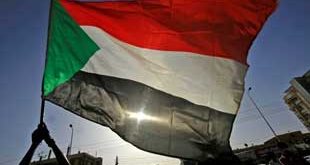
By Joseph Were
It is said the university administration foments the culture of students striking over tuition and benefits from it
One morning in early 1991, I was heading to the shower in University Hall at Makerere University when I was told that we, students, were on strike. Leading the protests was then-student guild president Norbert Mao, who is current president-general of the Democratic Party.
There was no teargas back then. Instead live bullets were fired. Two students were killed. The army beat up many, including current Deputy Speaker of Parliament, Jacob Oulanyah, who as guild speaker was a strike leader. He was hospitalised at Mulago.
President Yoweri Museveni’s government, which was barely five years in power, was fumbling with funding Makerere. It even gave the university 1280 hectares of land in Bululi to grow student food. The question back then was same as today – If education from kindergarten to higher secondary is paid for privately, why is university education expected to be different?
I recalled our 1991 strike during the latest student strike at Makerere. Our strike was because the government had just scrapped student allowances. Many might not believe it, but 25 years ago, Makerere offered 100% tuition-free education. Above this, students expected the government to give them free housing, food, stationery, and even pocket money and transport back home. But if Mao and Oulanyah were the Spoilt punks of Makerere (Spumuks) back then, the students in the recent strike are the Spumuks of today.
Unfortunately, Makerere and Museveni’s government have changed so dramatically that the Spumuks of today win battles that were easily lost in the past.
Back in 1991, despite the strike and the student deaths, the allowances were not restored. But after the recent strike, the university administration scrapped the 100% tuition payment policy they were introducing. That means we will have another strike over the same issue next semester.
Seeing this, some Ugandans are not dismissing a persistent claim that the university administration, in fact, foments the strike culture and benefits from it.
Its proponents point out that the strike cycle starts with the university issuing an arbitrary proclamation regarding the payment of tuition such as the 100% policy. Quite predictably, the students strike against it, and the police teargas and arrest some. Then student leaders, police, ministry of Education officials, and the university administrators meet and the government pledges money. The policy is withdrawn and normalcy is restored – until the next semester when the cycle is repeated. The strike, therefore, is the university’s way of sending a message to the government that it must pay its bit to the running of the university.
Secondly, the students strikes makes the point that the “students are poor” and cannot pay fees. As a result, the university can announce it is broke. In August, the Public Accounts Committee of Parliament was worried the university was saddled with a Shs25 billion debt to its suppliers.
Thirdly, unknown to them, the striking students enable the university administration to fudge the university accounts. Their strike confirms the view that the university receives tuition from students in bits and pieces and that it is pointless trying to get a comprehensive picture of how much the university collects in a year. Under this cloud, the university administration can fiddle with the accounts. In 2015, Shs900 million was found to have been misspent. In 2013, the Auditor General queried over Shs3.7 billion in administrative advances.
It is often missed that Makerere has three main sources of revenue namely, government subvention, internally generated funds, and development partner support. In the FY2012/13, the annual report shows, the University had revenue of Shs182 billion. A breakdown showed grants from government of Shs75 billion, and donors Shs8 billion. There is no mention of money collected from private students.
In the 2015/16 FY, Makerere has a budget of Shs89 billion from the government, Kyambogo Shs18 billion, Mbarara Shs14 billion and the small one like MUBS Shs4 billion, Gulu Shs8 billion and UMI Shs5 billion.
Although the government pays the bulk of the money which runs the university, there are about 40,000 students, about 90% of enrollment, at Makerere paying about Shs2 million each per year. That is potentially about Shs80 billion per year. How much does the university collect?
The point has possibly come when the university needs to explicitly account for the money paid by private students. The 2010/11 Auditor General’s report made this point. The university’s latest report indicates that in Academic Year 2013/14, the university had 36,516 students. But semester II of the previous year 2012/13, had 40, 725 students. That is a difference of 4,209 students. Surely, something is not right with such figures. They beg questions.
Unfortunately, unlike other institutions, Makerere University’s Annual Report does not have a section on its accounts. The nearest is comes to mentioning them is in a small section titled `Financial Resources’ under the `Academic support environment” section. Why push such an important issue to the last three paragraphs of the 80-page report?
There is a management mantra that Makerere’s Vice Chancellor, Prof. Ddumba-Sentamu needs to adopt. It is renowned management philosopher Peter Drucker’s insistence that “if you are to manage something, you should first be able to measure it”.
The point has possibly been arrived at when an attempt must be made to measure the Makerere problem.
For example, how big is the tuition problem at Makerere? Could the strikes be a case of a few students paralysing the learning of the majority? Why is it that of all the 39 universities in Uganda, only Makerere University – and occasionally, Kyambogo University – suffers the menace of strikes by students over tuition?
These universities charge the lowest fees. They also admit the richest students. In 2015, Mt. St. Mary’s SS Kitende, Uganda Martyrs SS Namugongo, King’s College Budo and Ntare School topped the admissions to these universities. As we all know, these schools also happen to charge the highest fees, often far higher than Makerere tuition. So how is it that these students can pay at the lower levels but start striking when they get to Makerere?
 The Independent Uganda: You get the Truth we Pay the Price
The Independent Uganda: You get the Truth we Pay the Price



